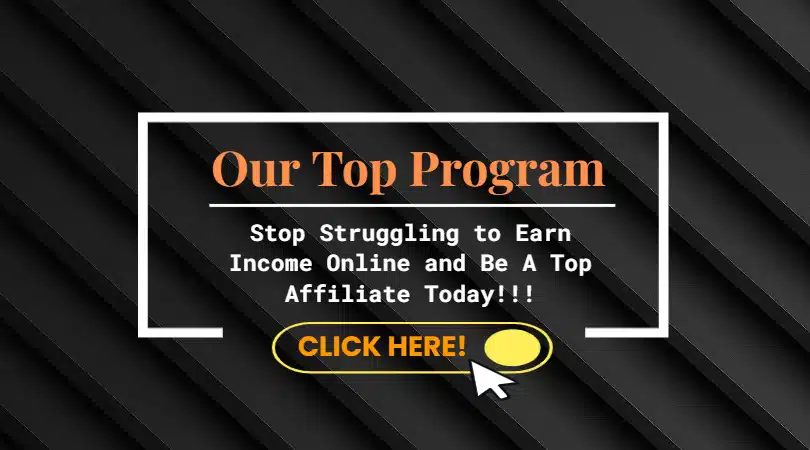Starting a blog is an adventure. An exciting journey where every word counts and the right strategy can open doors to a universe of readers. But how do you ensure people find your blog in the expansive sea of the internet? That’s where SEO comes in, a beacon guiding readers to your content.
In the world of blogging, mastering SEO is like finding the secret sauce. It might sound complex, but fear not! I’m here to break it down for you, making it as easy as sipping your favorite coffee.
SEO doesn’t have to be a puzzle. With a few beginner-friendly practices, you’ll be on your way to rankings that soar and content that shines. Let’s dive in and uncover the essentials of SEO for your blog.
Understanding the Basics of SEO
So, what is SEO? At its core, SEO (Search Engine Optimization) is like the map you use on a road trip. It guides the search engines, like Google, directly to your blog, ensuring they understand what your content is about. This helps in showing your posts to people searching for topics you’re covering.
What Search Engines Love
Search engines are all about relevance and authority. They want to provide users with the best and most relevant results. How do you make your blog the go-to spot? It starts with creating great content that answers questions or solves problems. The more helpful your content is, the more the search engines will favor it.
Keywords: Your Road Signs
Keywords are those terms or phrases people punch into search engines. They’re like signposts guiding potential readers to your blog. Including the right keywords in your posts helps search engines understand what you’re talking about. But it’s not about stuffing your content with as many keywords as you can; it’s about being smart and natural.
Think of your audience. What are they likely to search for? Use those insights to sprinkle relevant keywords throughout your content, especially in titles, headings, and the first paragraph. This helps search engines know that your post is exactly what searchers are looking for.
Remember, SEO isn’t about tricking search engines. It’s about making your content easily discoverable by those who need it the most. With every blog post, you’re teaching search engines how valuable your website is to readers. And in turn, they’ll help those readers find you.
Getting to grips with SEO basics sets the stage for more advanced strategies down the line. But everyone starts somewhere, right? And understanding these foundational elements will make the rest of your SEO journey smoother and more effective. Let’s keep going!
Choosing the Right Keywords
Okay, we’ve nailed down that keywords are like signposts. But how do you pick the ones that will bring your blog the most visitors? It’s a bit like fishing – you want to use the bait that will attract the fish you’re looking to catch. Let’s dive into how to choose these oh-so-important keywords.
First things first, put yourself in your readers’ shoes. What would you search for if you were looking for the answers your blog provides? Start listing these terms out. This is your starting point.
Understanding Your Audience
Really knowing your audience is like having a roadmap. If you understand their interests, problems, and what they’re searching for, you can tailor your keywords to match. Sometimes, it’s the simple, everyday language that works best, rather than industry jargon that might go over their heads.
Using Keyword Tools
Now, don’t shy away from technology. There are fantastic tools out there that can show you how often people search for certain terms, and even suggest additional keywords. Tools like Google’s Keyword Planner, Moz, and others can be incredibly insightful. They can take your original list and expand it, giving you a treasure trove of keywords to work with.
It’s not just about volume, though. Look for phrases that are specific enough to draw in the right audience but not so narrow that no one is searching for them. This balance is key.
Don’t ignore the long-tail keywords, either. These longer phrases are more specific and often less competitive. Sure, they may get fewer searches, but they attract more targeted traffic. Think about it: someone searching for “how to bake a chocolate cake” is probably more ready to dive into your baking blog than someone just searching for “cake.”
So, taking the time to choose the right keywords is crucial. It’s not about bombarding your content with as many terms as possible. It’s about selecting the ones that will catch the attention of your ideal reader.
Remember, keywords are just the start. They get your foot in the door, but your content is what keeps readers coming back for more. Combine the right keywords with valuable, engaging content, and you’ve got a recipe for success. Let’s keep those readers hooked!
Optimizing Content for Search Engines
So, you’ve got your keywords. Awesome! But what’s next? How do you use them to make sure people actually find your blog? Optimizing content for search engines, my friend, is your next mission.
Imagine baking a cake. You’ve got all your ingredients measured out (that’s your keywords), but you need to mix them in the right way to get a tasty result. That’s what we’re doing here with your content.
First up, sprinkle your keywords throughout your post, but do it naturally. Like salt in cooking, too much can ruin the dish. Your keywords should fit so seamlessly into your text that readers barely notice them as anything special.
Then, let’s not forget your title and headings. These are like signposts that tell search engines what your content is about. Including keywords here can really help. But remember, make it natural and make it catchy. You’re writing for humans first, search engines second.
Meta descriptions are also key. That’s the little snippet that appears under your page title in search results. It’s like the blurb on the back of a book. Include your main keyword and make it intriguing. This could be what decides whether someone clicks on your link or not.
And images! Search engines can’t read images, but they can read the text you attach to them – like titles and alt text. Dropping keywords here can boost your searchability and make your post more accessible.
Now, onto links. Linking to reputable sources can build credibility, both with your readers and search engines. And when others link back to you, it’s like getting a vote of confidence. It tells search engines your content is valuable.
But let’s be real. This isn’t a one-and-done deal. Search engines are always evolving, which means your approach needs to evolve too. Keep an eye on your site’s performance and be ready to adapt. Try different keyword combinations, tweak your meta descriptions, and see what works best.
Remember, optimizing for search engines is important, but your priority should always be your readers. Create content that’s valuable, engaging, and useful for them. Do that, and search engines will take notice. Let’s make your blog not just found, but loved.
Utilizing Meta Tags and Descriptions
Alright, we just dived into how important keywords are. Now, let’s chat about another tool in your SEO toolbox: meta tags and descriptions. These little guys are like the secret sauce to making your content more discoverable.
Think of meta tags as the ingredients list on a recipe. They’re not the main dish, but they tell you what’s inside. Specifically, they help search engines understand the content of your page. This includes your title tag, which is the title of your page as it appears in search results.
Crafting the Perfect Title Tag
Your title tag is like the headline of a newspaper article. It needs to be catchy, yet clear. Make sure it includes your main keyword, but also keep it interesting. This is the first thing folks see in search results, so make it count!
Now, onto meta descriptions. This is the short blurb that appears under your title in search results. It’s your chance to tell potential readers why they should click on your page. Again, include your main keyword here, but also focus on making it engaging.
Think of your meta description as the elevator pitch for your page. You’ve got just a couple of lines to convince someone to choose your link over all the others. No pressure, right? Keep it concise, clear, and compelling.
Images: Don’t Forget the Alt Text
When it comes to images, search engines can’t actually see them, but they can read the alt text you assign. This is another opportunity to use your keywords and help improve your search engine ranking. Every image on your page should have alt text that describes what’s in the image. This isn’t just good for SEO; it’s also important for accessibility.
Here’s the deal: optimizing your meta tags and descriptions isn’t rocket science, but it does take a bit of thought and creativity. The goal is always to make your content as discoverable as possible without sacrificing the quality of what you’re putting out there.
Remember, meta tags and descriptions are just pieces of the puzzle. They need to work in harmony with your content and keywords. Keep refining, keep tweaking, and most importantly, keep your audience in mind. With a little effort, you’ll start to see your pages climbing up those search results. Let’s get your content the spotlight it deserves!
Best Practices for Internal Linking
Now that we’ve got our head around meta tags and descriptions, it’s time to lace up our sneakers and dive into the world of internal linking. This might seem like small potatoes, but trust me, it’s got the potential to make a big difference.
So, what’s the deal with internal links? They’re basically links that go from one page on your website to another. Sounds simple, right? Well, when used correctly, they can be a powerful tool for SEO and for enhancing the user experience.
First things first, think of your website as a city. Your internal links are the roads that connect everything together. You want to make it easy for your visitors (and search engines) to explore your site. This means creating clear, logical pathways through your content.
One key practice is to use descriptive, keyword-rich anchor text. Instead of saying “click here”, tell your visitors what they’re going to find when they follow the link. This helps with SEO and makes your site more accessible.
But don’t overdo it. Like anything good in life, moderation is key. Too many links can be overwhelming and might dilute the value of your content. Aim for a balance that makes your content more valuable and engaging.
Another point to remember is to link to high-quality, relevant content. This keeps your visitors engaged and encourages them to explore your site further. Plus, it shows search engines that you’re all about providing value, which can boost your rankings.
When adding internal links, consider their placement. Links higher up in your content may carry more weight with search engines. Yet, don’t just shove them in at the top. Make sure they fit smoothly with the rest of your content.
Regularly check your links too. Broken links lead to dead ends and frustrated visitors. They’re like potholes on the roadways of your website. Regular maintenance helps keep everything running smoothly.
Let’s wrap this up. Internal linking isn’t just about SEO. It’s about providing a seamless and enjoyable experience for your visitors. Done right, it can guide them through your site, increase engagement, and even convert more leads. So, take the time to link smartly and watch your site grow stronger.
Measuring Success with Google Analytics
Alright, we’ve laid some solid groundwork with internal linking. Let’s pivot a bit and talk about something every site owner needs to get cozy with: Google Analytics.
Google Analytics is like the high-powered microscope of the digital world. It allows us to zoom in and understand exactly what’s happening on our site. But don’t worry, it’s not as intimidating as it sounds.
First off, one of the most crucial things to monitor is your traffic. This tells you not just how many people are stopping by, but also where they’re coming from. Organic search, social media, direct visits? This info is golden. It can influence where you put your energy.
Next up, bounce rate. This metric gives you the lowdown on whether people are sticking around or bouncing off faster than a superball on concrete. A high bounce rate might mean your site’s not as sticky as you hoped. Time to tweak your content or navigation? Possibly.
Now, let’s talk about conversion. Whether it’s signing up for a newsletter or making a purchase, tracking conversions is like having your finger on the pulse of your website’s health. If conversions are low, it’s diagnosing time. Maybe it’s your call-to-action buttons or perhaps the checkout process. Time to investigate!
Engagement metrics, such as pages per session and average session duration, also offer valuable insights. They can tell you if your content is as engaging as a blockbuster hit or if it’s putting people to sleep. The goal? Keep ‘em coming back for more.
But here’s the kicker – you’ve got to set up goals in Google Analytics to track this stuff properly. Think of goals as your personal success markers. Whether it’s downloading a PDF or completing a purchase, setting up goals lets you measure what matters.
Lastly, don’t forget to regularly review your data. Making it a routine means you’ll quickly catch any dips in traffic or conversions and can pivot faster than a cat on a hot tin roof.
Remember, Google Analytics isn’t just about numbers; it’s about stories. The stories of how users interact with your site, what they love, and what could be better. So, dive in, get your hands dirty, and start shaping your site’s success story today.
The Bottom Line: Monitoring and Adjusting Your Strategy
So, we’ve journeyed through the ins and outs of boosting our site’s performance, from the nitty-gritty of Google Analytics to the art of keeping visitors engaged. The journey doesn’t stop here, though. It’s all about the circle of monitoring, learning, and tweaking.
In essence, the magic formula isn’t so magical after all. It’s about keeping an eye on the right metrics and being ready to pivot your strategy when needed. Traffic trends, bounce rates, and conversion numbers? They’re your roadmap.
But here’s the thing: The landscape of the web is ever-changing. What works today might not cut it tomorrow. That’s why staying agile in your strategy is key. Test new approaches, retire what doesn’t work, and always, always keep your user’s experience front and center.
Remember, every tweak, every adjustment is a step closer to your site performing like a well-oiled machine. And in the world of websites, a smooth machine not only draws visitors in but keeps them coming back.
Wrapping up, monitoring your strategy isn’t just about numbers. It’s about connecting with your audience, understanding their needs, and adapting to serve them better. Dive into your data, but also stay connected with your audience directly. Their feedback is invaluable.
Bottom line? Keep measuring, keep adjusting, and keep your eyes on the prize: a website that not only ranks well but truly resonates with your visitors. Here’s to your success!







As a novice blogger myself, understanding the importance of keywords, internal linking, and optimizing content for search engines has opened my eyes to the true world of SEO. In my opinion the tips provided here are practical and easy to implement, and I can’t wait to start applying them to my own blog posts. Thank you for breaking down these complex concepts in a way that’s easy to understand and implement. Looking forward to seeing the results of implementing these strategies on my blog
The best of us can speak fluent Google without forgetting that at the end of the day Google can love us all we can take but unless our message reaches the masses in a readable quality for humans sales will not flow and it will all be for nothing. Glad this post resonates with you.